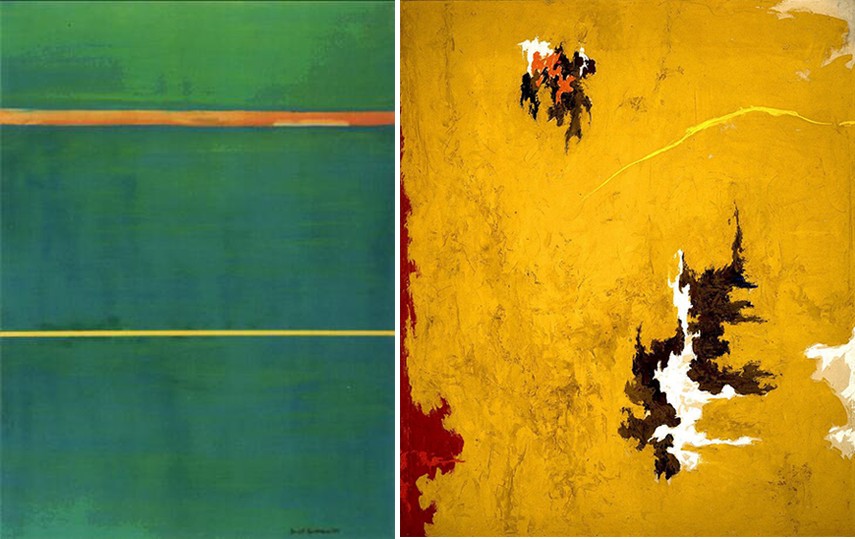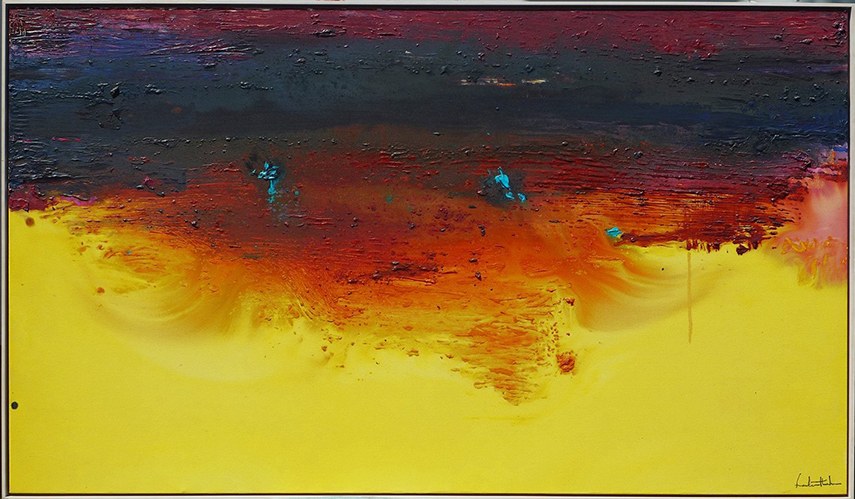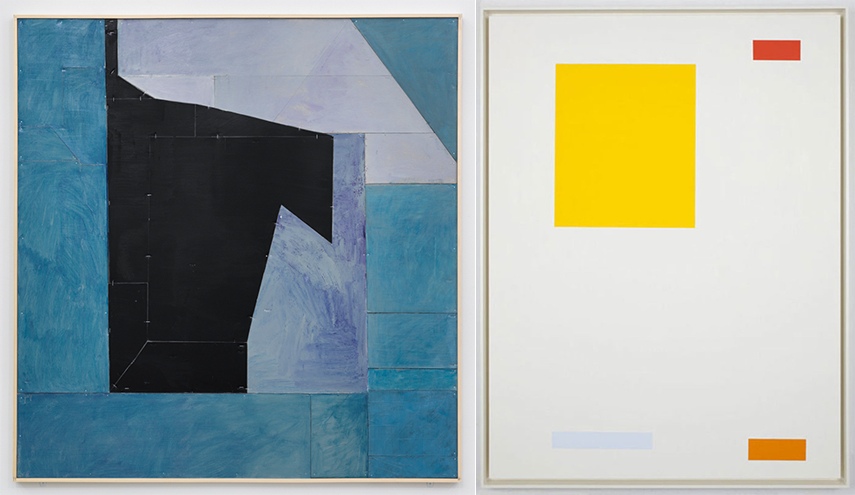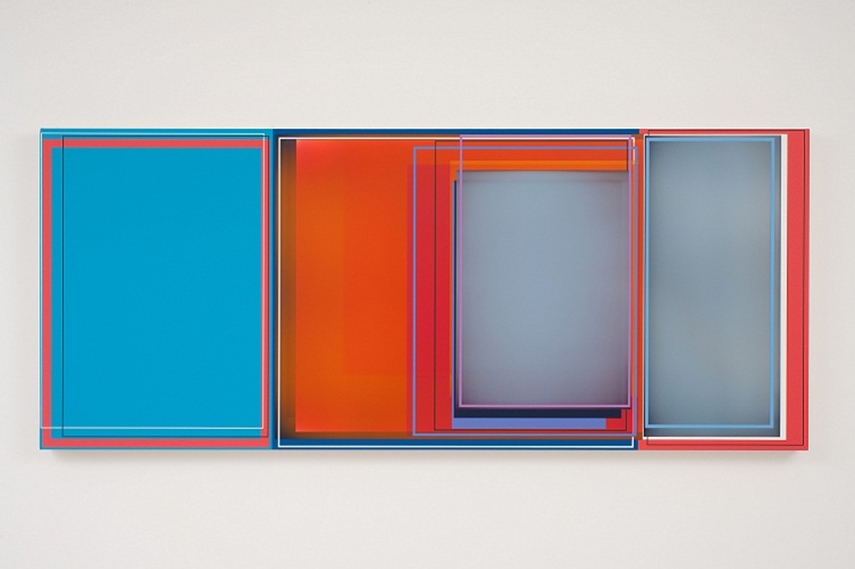Color Field Painting Today - The Heritage of Mark Rothko
Pioneered by Mark Rothko, Barnet Newman and Clyfford Still in the late 1940’s, color field painting became a significant movement in the decades that followed, influencing the generations of young artists worldwide. Diverging from the gestural abstraction, color field painting became a significant source of inspiration for those artists more interested in the expressive potential of color, independent from the suggestion of forms or lines. We have recently discussed the return of the abstract art in the artistic practice and its big comeback on the global art market, and this offspring of the abstract expressionism should not be overlooked. Color field painting is still alive and well today, and there are numerous contemporary artists following the footsteps of their predecessors, building on the foundation which was dismissed by the critics decades ago.

Rothko, Newman, Still - Departure from the Gestural Abstraction
During the late 1940’s and the early 1950’s, Abstract Expressionism established itself as a dominant movement in the US, sprouting different tendencies within its own aesthetic canon. Unlike gestural abstraction focused on action and the context of the artistic process, most notable in the painting style of Jackson Pollock and William de Kooning, color field painting took a different turn, concentrating on the intricate color interplays and subtle coherence of forms and colors. The emergence of color field painting is now widely connected to the three significant names in the field of abstractionism. Mark Rothko, Barnet Newman and Clyfford Still who at the same time embarked on their independent journeys to find the more delicate painting style, the one capable of expressing the longing for sublime and transcendence, essential and purer sentiments. Mark Rothko found it in his rectangular composition of murky color fields, Newman in color pure works and vertical zips, and Still in the irregular and heavy-textured compositions of juxtaposed colors and surfaces. The common thread between their styles was the orientation towards monolithic imagery, flat fields of color and unbroken surfaces. In the mid-1950’s the art critic Clement Greenberg introduced the term color field painting in order to differentiate these tendencies from other forms of expressionism, and in the following years color field painting became a movement in its own right.

The Golden Era of Color Field Painting
In the fifties and the sixties, a whole generation of new color field painters emerged, introducing revolutionary paint handling techniques. Helen Frankenthaler was one of the first artists to use the stain painting technique, pouring the paint mixture directly onto the unprimed canvas and painting shapes as they stained, Morris Louis started soaking his canvases and eliminating brushes completely from his practice, and several other artist started experimenting with spray painting and the use of stripes.
Be sure to check out works by Helen Frankenthaler on our marketplace!
Other notable artists from the second generation of color field painters include Kenneth Noland, Jules Olitski, Alma Thomas and Sam Gilliam among others. The new art movement was strongly supported by the art critics at the time and in 1964. Clement Greenberg curated the exhibition Post-Painterly Abstraction, dedicated to the promotion of this new style and post-painterly abstraction became one of the synonyms for the color field. The fame of the movement was short lived, as these new artists started to eliminate the original emotional and philosophical content from the paintings, moving towards more decorative and austere compositions.

Contemporary Art Examples
Discarded by the art historians and forgotten in the pop art era, color field painting, just like the abstract expressionism in general, started making its comeback in the last two decades. Currently, there is a significant number of contemporary artists, inspired by the color field aesthetics in a myriad of ways. For instance American artist Jenny Holzer combines the simple color fields with political text in her work, something that was stripped from the initial style at the time of its founding. Other notable contemporary artists showing that the heritage of color field painting lives on are Australian artist Florian Schmidt known for his mixed-media block pieces, Patrick Wilson, Günter Umberg and Yun Hyong-Keun among many, many others.
Color Field Painting Today

The Future of the Color Field Painting
The recent resurrection of abstract art and color field painting can definitely be seen as part of the revival trends in contemporary art practices and certainly as one of the main features of postmodernism, dominated by the appropriational spirit and constant recycling of the old art movements. Nonetheless, it doesn’t necessarily has to be a bad thing, and it is yet to be seen what are the possible outcomes of the color field painting in the 21st century. Just like abstract art in general, color field paintings are favored by the collectors and the rise of the movement might be explained by the current art market demands. Whatever the reasons are, the heritage of Mark Rothko, Newman and Still is ever present in our age, proving the art critics wrong and showing a great power of resilience.
Featured image: Mark Rothko - Untitled, 1964
Can We Help?
Have a question or a technical issue? Want to learn more about our services to art dealers? Let us know and you'll hear from us within the next 24 hours.
